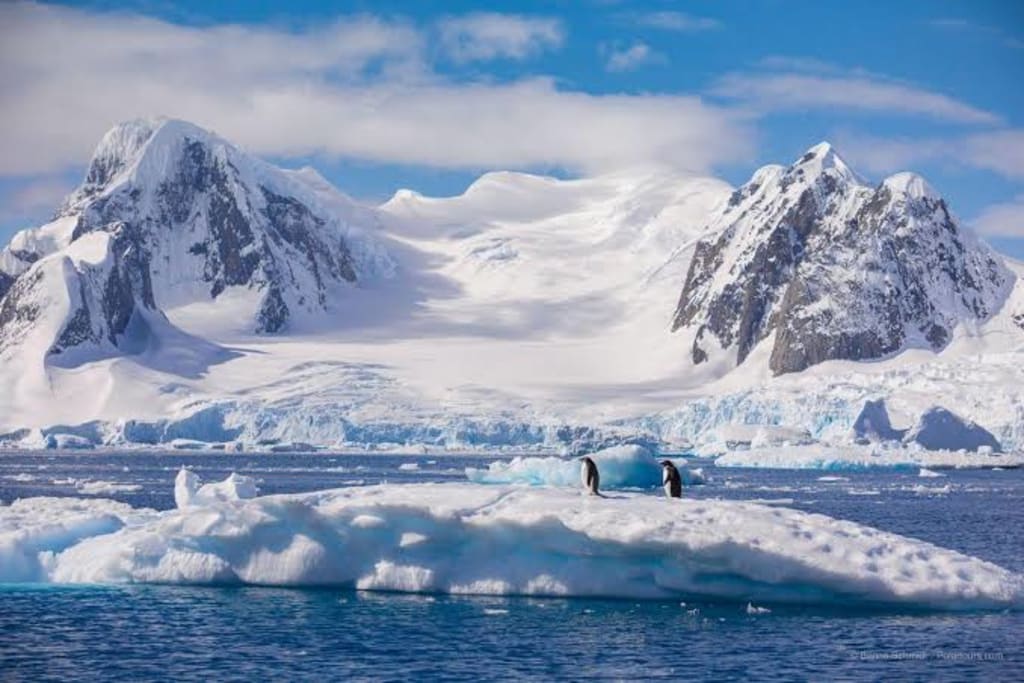Why no one is allowed to Explore the Antarctic
Exploring the Mysteries and Regulations of Antarctica.

The coldest continent on Earth is also one of the most enigmatic places in the world. It is as unique as it is secretive, and unlike most destinations, you cannot simply hop off a commercial flight unless you are an elite scientist or an emperor penguin.
Exploring Antarctica is forbidden, and even if you could, good luck braving the frostbite-inducing temperatures of -130 degrees Fahrenheit or -90 degrees Celsius.
But why is it restricted, and where do these rules originate from?
Let's find out.
Before the mid-1900s, Antarctica was a mystery to us. Then, an American Navy Explorer named Admiral Richard Byrd Jr. changed everything. Besides the vast expanses of ice, endemic wildlife, and wintry conditions he had never seen before, what else did he discover? While it remains shrouded in mystery, many believe that Byrd stumbled upon an underground civilization called Agartha. In 1957 and 1958, several countries came together and decided to protect Antarctica based on the new research findings. This led to the creation of the Antarctic Treaty.
What does this treaty entail?
Essentially, it allows scientists to conduct research in the icy wilderness, but for the rest of us, there are limitati ons.
Exploration in Antarctica is not banned, but it is highly regulated under the Antarctic Treaty System. This international agreement designates Antarctica as a scientific preserve, promoting peaceful scientific research and environmental protection. The regulations aim to prevent environmental damage and preserve the delicate Antarctic ecosystem. All activities, including tourism and research, must adhere to strict guidelines to minimize human impact on this pristine continent.
For example, we can visit Antarctic waters on a cruise ship, and technically, there are a few landing spots along the peninsula where we can set foot on the land. However, compared to the vast expanse of the continent, these spots are minuscule. The treaty also stipulates that no single nation can claim ownership of Antarctica; instead, it is divided among seven countries. So, while we are not permitted to freely roam the frozen landscape of Antarctica, it is primarily for the preservation of the environment, which is crucial for the world's well-being.
Here are the key aspects of Antarctica's harsh climate:
Extreme Cold: Antarctica is the coldest place on Earth. The lowest temperature ever recorded on Earth, -128.6°F (-89.2°C), was measured at Antarctica's Soviet Union's Vostok Station. In winter, temperatures commonly plummet below -40°F (-40°C) across much of the continent.
Dryness: Despite being covered by an immense ice sheet that holds about 60% of the world's fresh water, Antarctica is technically classified as a desert due to its extremely low precipitation. The interior of Antarctica receives less than 2 inches (50 mm) of precipitation per year, making it the driest continent.
Winds: Antarctica experiences incredibly strong winds, especially near the coast where katabatic winds descend from the high polar plateau. These winds can exceed hurricane force (74 mph or 119 km/h) and are capable of transporting large amounts of snow.
Seasonal Variation: Antarctica undergoes dramatic seasonal changes. During summer (November to February), temperatures can rise just above freezing near the coast, with 24 hours of daylight in some regions. In contrast, winter (June to August) brings months of darkness and temperatures that drop far below freezing, reaching their coldest in July.
Polar Night and Midnight Sun: Due to its extreme southern latitude, parts of Antarctica experience polar night during winter, where the sun remains below the horizon for months. Conversely, during summer, there is continuous daylight for several months, known as the midnight sun.
Ice and Glaciers: Antarctica is covered by an ice sheet that averages about 1.2 miles (1.9 km) thick, containing around 70% of the world's fresh water. The weight of this ice sheet depresses the continent's bedrock, causing parts of Antarctica to be below sea level.
Climate Change Impact: Despite its harsh conditions, Antarctica is not immune to climate change. Warming temperatures have led to significant ice loss, particularly along the Antarctic Peninsula, contributing to rising global sea levels.
Understanding Antarctica's harsh climate is crucial for scientific research and environmental conservation efforts in this remote and pristine region of the world.
About the Creator
MinJoey Haokip
Interested in adventures, writing stories and create new stories.
Enjoyed the story? Support the Creator.
Subscribe for free to receive all their stories in your feed. You could also pledge your support or give them a one-off tip, letting them know you appreciate their work.





Comments
There are no comments for this story
Be the first to respond and start the conversation.